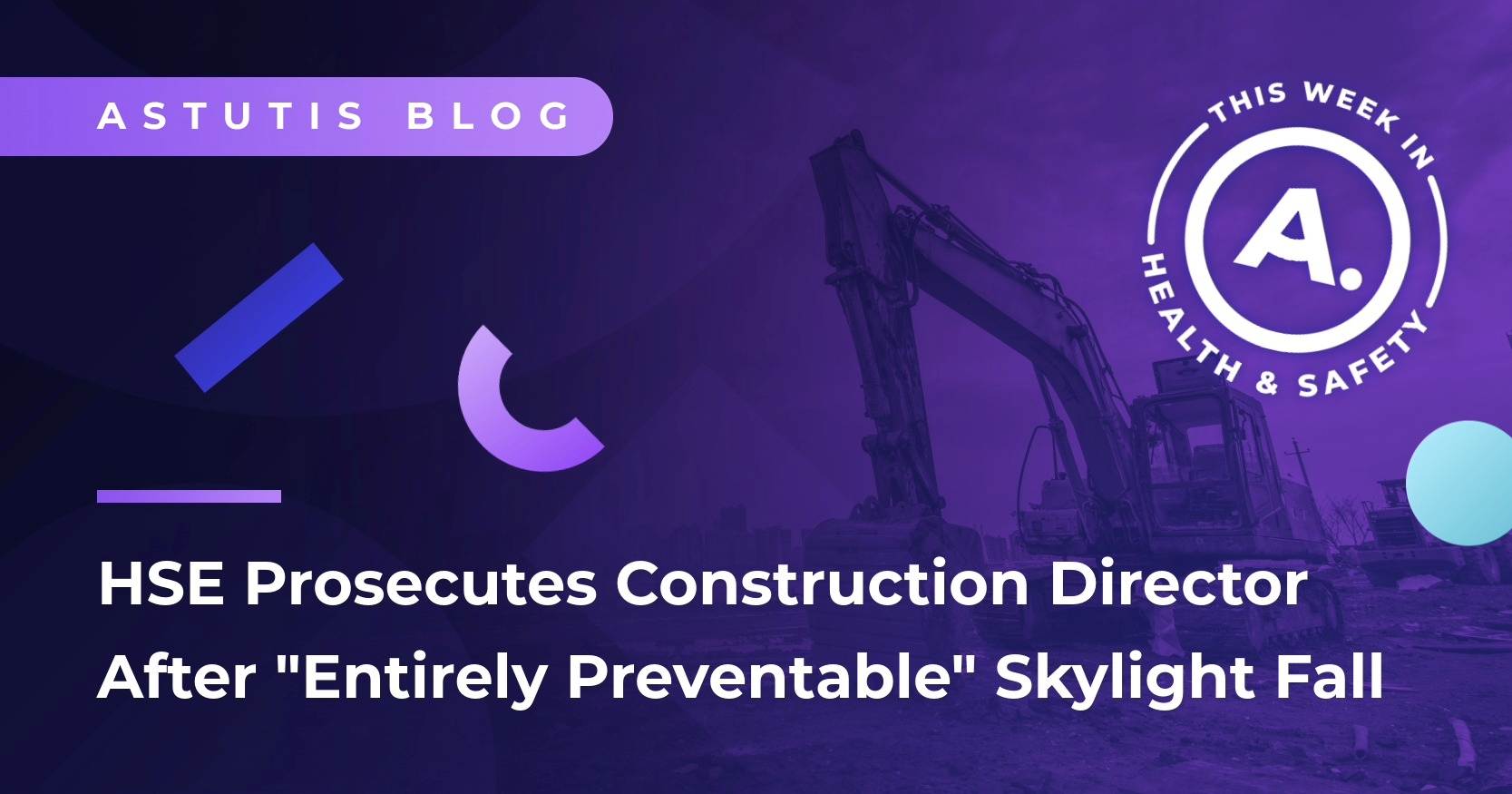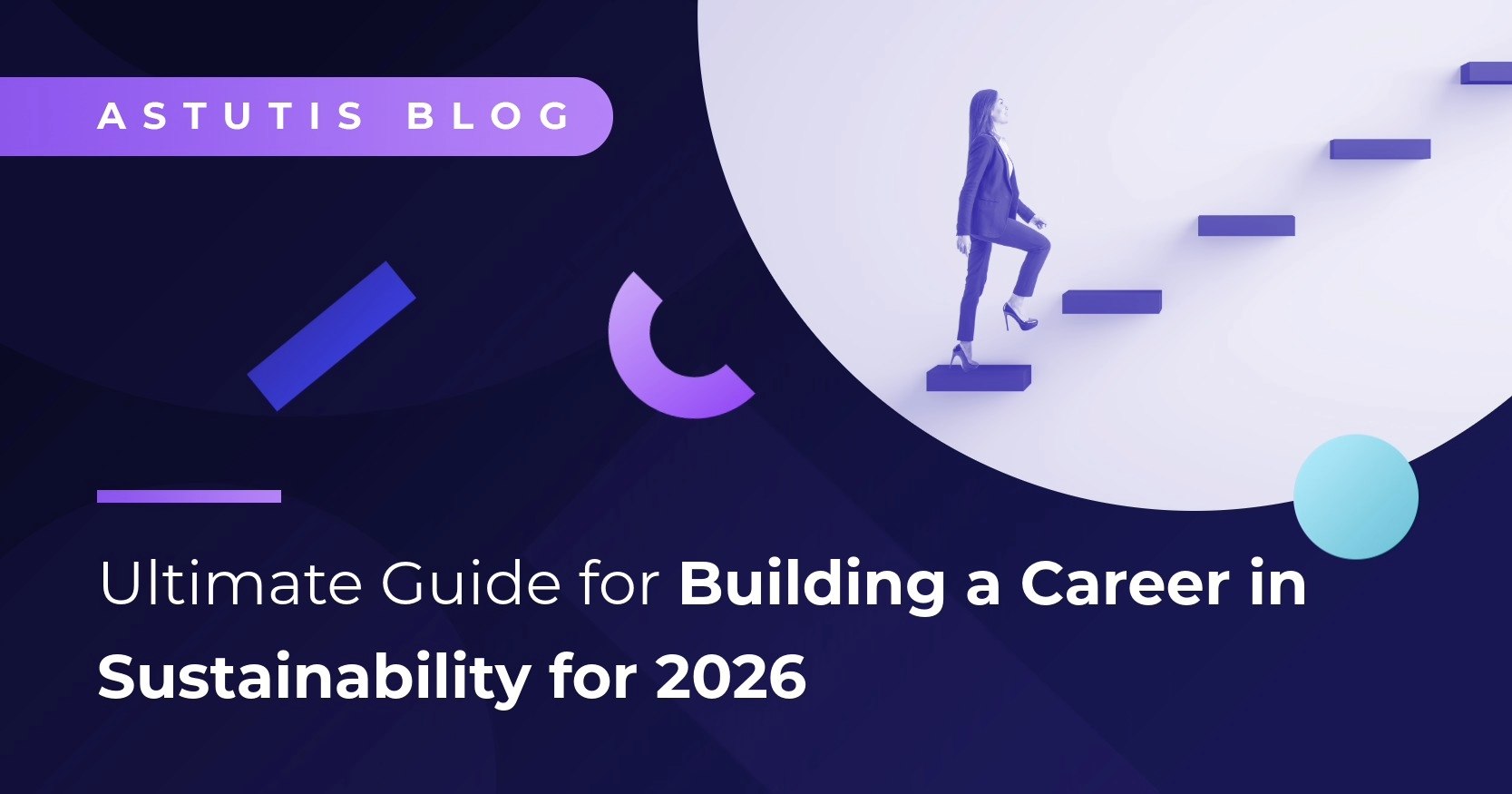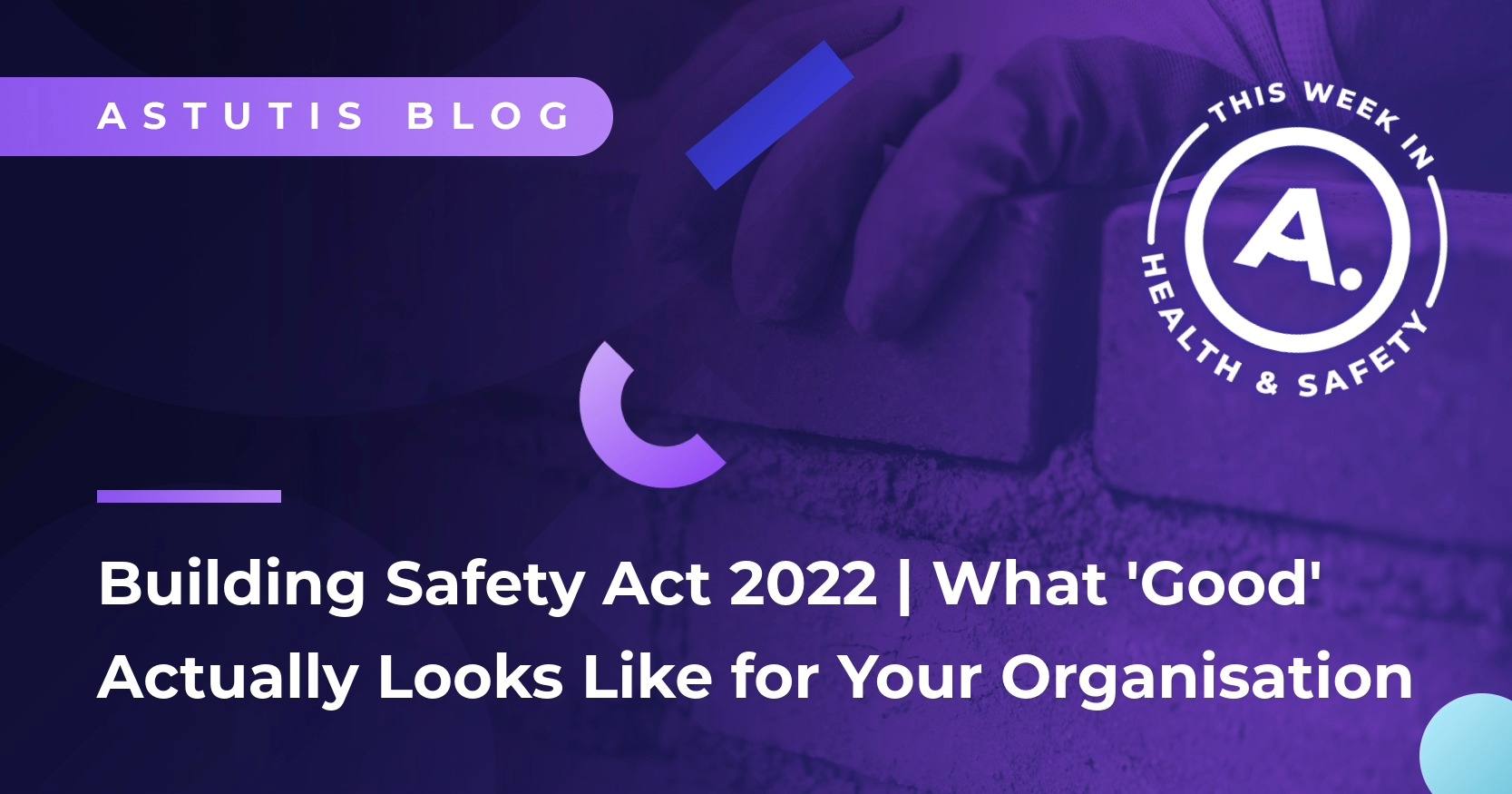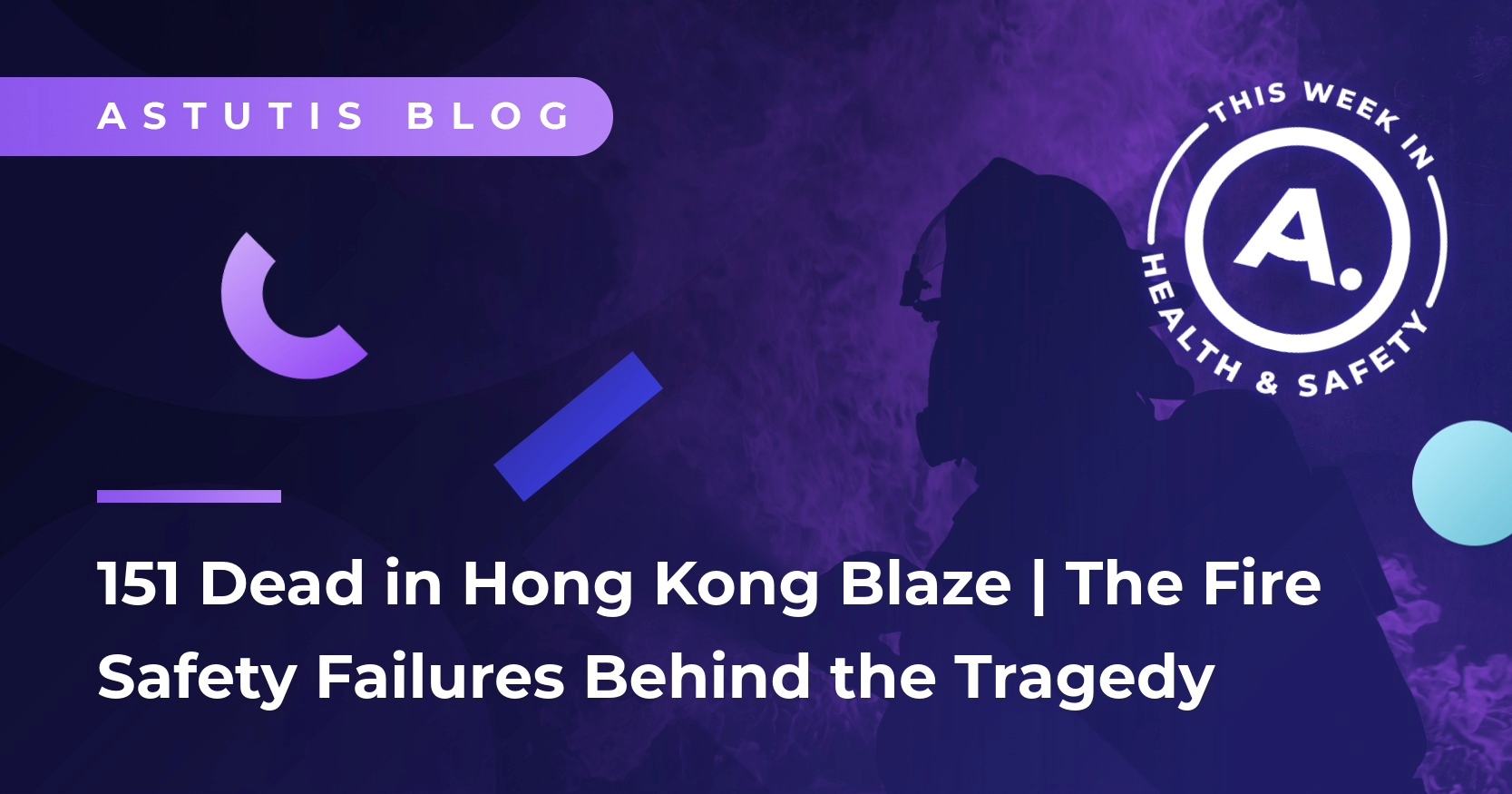How to Complete the IOSH Managing Safely Risk Assessment Project (With Examples)
The IOSH Managing Safely risk assessment is the practical component of the IOSH Managing Safely course. It tests your ability to apply health and safety principles in a real-world setting by identifying hazards, evaluating risks and recommending control measures.
To pass the course, you must complete:
- A multiple-choice knowledge test
- A practical risk assessment project
This guide walks you through the risk assessment process, with examples and tips to help you succeed.
When and How to Submit Your IOSH Risk Assessment
- Deadline: Submit within 14 days of completing your course
- Format: Use the official IOSH risk assessment form
- Submission: Email your completed project to your training provider
Step-by-Step Guide to Completing the IOSH Risk Assessment
Step 1: Fill in Your Details
The first mark available is an easy one. Set the scene for your assessor by filling in the following:
- Your Name
- Course End Date – When you finished your course
- Training Provider – Who delivered your training
- Assessors Name – Your Name
- Date and Time – State when you undertook the assessment
- Work area – Where the task is being undertaken
- The task being assessed – What task you are risk assessing.
Example: Cleaning up spilt oil, carrying boxes from a conveyor belt to a pallet, or cutting pieces of wood with a circular saw.
Step 2: Clearly Identify the Hazard
The first column is where you identify the hazard. A hazard is defined as “anything that has the potential to cause harm.”
Make sure that you clearly describe what the hazard is. This doesn’t mean you have to write a lot, but what you do put down should clarify the hazard. Remember, you would distribute a risk assessment to key personnel in real life, so you need to be as clear as possible.
Example:
Poor: “Slip hazard”
Better: “Slip hazard due to oil spill on concrete floor” provides a bit more clarity for the marker and workers who read the risk assessment.
Step 3: Identify Who Might be Harmed
You’re likely to automatically think of the workers undertaking the task and the workers within the immediate area. But remember that others might also be at risk. Think beyond employees.
Example: Think outside the box.
- Do you have visitors in the work area?
- Cleaners?
- Maintenance workers?
- The public?
If so, they should be noted down here too.
Step 4: Describe How People Might Be Harmed
This includes injury and ill health risks. We often think of the immediate effects of hazards in terms of injuries. But it would be best if you also considered whether there are any long term ill-health effects associated with the hazard. Clearly state what any injury or ill-health effects are in this section.
Example:
- Immediate injuries (e.g. fractures, cuts)
- Long-term effects (e.g. respiratory issues, hearing loss)
Step 5: Evaluate Existing Risk Control Measures
This part asks you to identify what measures of control you have in place for this hazard at the time of your assessment.
Don’t limit your answer to physical controls such as guards, local exhaust ventilation (LEV), signage, etc. Consider administrative/ soft controls such as training, supervision, job rotation, or safe work systems. (These are also important to consider when you get to the Additional Controls stage below).
Be clear with your description of the controls. Don’t just write one-word controls such as “PPE”. Clearly define what type of PPE is required.
List current controls:
- Physical (e.g. barriers, PPE)
- Administrative (e.g. training, supervision)
Example: Spill signage, nitrile gloves or safety goggles.
Step 6: Calculate Current Risk Rating (LCR Risk Matrix)
This is where you rate the risk of the hazard with the controls that are currently in place. You do this using the IOSH 5 x 5 Risk Matrix rating calculator.
Example: LCR Risk Rating Calculator
The IOSH 5 x 5 risk rating calculator rates the likelihood and consequences on a scale of 1-5:
- (L) Likelihood: How likely is it that the hazard will harm someone?
- (C) Consequence: What are the consequences if someone is harmed? This is also often referred to as the Severity of harm.
- (R) Risk: The overall Risk rating, which results following multiplying the Likelihood and Consequence.
Likelihood of Hazardous Event to Occur | |
|---|---|
1 | Very Unlikely |
2 | Unlikely |
3 | Fairly Likely |
4 | Likely |
5 | Very Likely |
Consequence of Hazardous Event | |
|---|---|
1 | Insignificant – No injury |
2 | Minor – Minor Injuries Needing First Aid |
3 | Moderate – Up to Three Days Absence |
4 | Major – More Than Seven Days Absence |
5 | Catastrophic – Death |
Once you have identified the likelihood and consequence, you multiply the two numbers to get your Risk Rating (R).
Likelihood x Consequence = Risk
Example: If you think the likelihood is ‘Likely’ (4) and the Consequence is ‘Moderate’ (3), then:
4 x 3 = 12. Your Risk Rating is 12.
Lots of learners stress over getting this number right. Don’t worry; the marker is fully aware that this type of rating system is subjective. There will always be a variety of opinions with the risk rating. Just make sure that you are realistic with your ratings, and you’ll be all right.
Step 7: Recommend Additional Controls
This requires you to provide additional controls that will reduce the risk. Be realistic and take into account the risk rating you just calculated.
As discussed in Step 5: Existing Risk Control Measures above, make sure you think about various controls, not just physical ones.
Example: Suggest realistic improvements:
- Enhanced PPE
- Improved signage
- Updated training
- Maintenance schedules
Step 8: Calculate Residual Risk Rating
Once you’ve decided on your new control measures, you need to carry out another risk rating using the same IOSH 5 x 5 Risk Rating calculator.
Your new Residual Risk Rating should be lower than your previous one.
Example: Likelihood reduced to 2, Consequence remains 3 → Residual Risk = 6
Step 9: Assign Actions
Specify: Action Monitored by Whom?
State who is to monitor each additional control by job role.
Example: Engineering Manager.
Action Monitored by When?
There’s no plan without timelines, so allocate a time scale for each additional control.
Example: Don’t put phrases such as “On-going” or “Within a few weeks”. Use timely, measurable timeframes such as 2 weeks, 6 weeks, 2 months.
Make sure you follow the IOSH Action Level Table that provides you with guidance based on your Risk Rating:
Risk Rating | Action |
20-25 | Stop – Stop the activity and take immediate action. |
15-16 | Urgent Action – Take immediate action and stop the activity if necessary, maintain existing controls rigorously. |
8-12 | Action – Improve within the specified timescale. |
3-6 | Monitor – Look to improve at next review, or if there is a significant change. |
1-2 | No Action – No further action but ensure controls are maintained and reviewed. |
Step 10: Review Date, Signature and Training Provider (1 Mark)
Another easy mark! Sign off your risk assessment by filling in the details at the bottom of the form outlined below:
- Review Date: Make sure that you give a realistic review date for your assessment, for example, 12 months.
- Sign the Assessment – If sending via computer, include your printed name.
- Include your training provider name in the final box.
IOSH Risk Assessment Marking Criteria
You’re required to identify four hazards. For each hazard and the decision you make, you can gain a mark. You can also gain marks by filling in the introduction and review date of your assessment, these are easy marks to gain, so don’t forget to fill in these sections!
- Marks available: 38
- Pass mark: 23 (60%)
- Marks awarded for:
- Hazard identification
- Risk ratings
- Control measures
- Completion of all form sections
Identifying Hazards: How to Start Your IOSH Managing Safely Risk Assessment
Choose a suitable workplace that has a range of hazards available. You need to identify hazards from a range of categories. If your own work doesn’t offer a range of categories, then get in touch with your course provider and they’ll source you something more suitable.
Make sure you’ve marked the submission deadline in your diary. If you don’t submit your risk assessment on time, then you’ll fail. Please don’t leave it until the last minute! Make sure you read all of the guidance given to you by your course provider.
Tips for Success
- Choose a workplace with diverse hazards
- Use clear, concise language
- Be realistic with risk ratings
- Don’t leave submission to the last minute
- Ask for help if your workplace lacks suitable hazards
What Happens After Submission?
- Results typically returned within 2–3 weeks
- Certificate issued within 6–8 weeks (if both assessments are passed)
IOSH will typically send us the result of your practical assignment within 2-3 weeks of submission. We’ll let you know if you’ve passed or failed as soon as we hear from them.
Remember, you also need to pass the multiple-choice knowledge test to achieve your full IOSH Managing Safely Certificate. Provided you’ve passed both assessments, we’ll send you your hard-copy IOSH Managing Safely certificate in the post within 6-8 weeks of completion.
Resources to Help You Pass
Related Blogs

Real Life Stories










